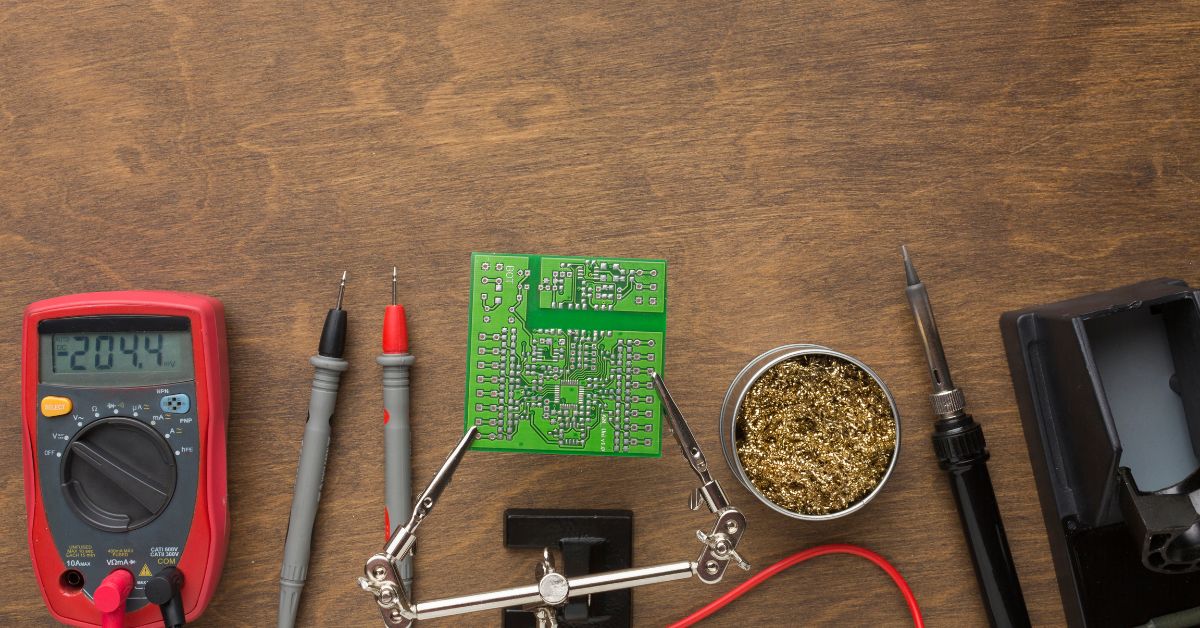Electrical systems require more than just functional sealing. They need materials that ensure safety and long-term stability. Exposure to varying voltages, temperatures, and environmental conditions stresses components, especially in enclosures and connection points. Choosing sealing materials that resist electrical currents helps prevent system failures and enhances protection for sensitive equipment.
Among the materials trusted for such needs, EPDM rubber consistently performs well in both indoor and outdoor environments. Its ability to resist electricity makes it a reliable choice across industries. Custom Molded EPDM O-rings are widely used in electrical setups where insulation and precision sealing must go hand in hand.
What Makes EPDM Suitable for Electrical Use
EPDM rubber has become a favored material in applications with critical electrical resistance. It naturally resists the current flow, which is measured through its dielectric strength. This property ensures the rubber acts as an insulating barrier, preventing accidental current flow across components that must stay isolated.
The material also withstands high humidity, UV exposure, and chemical contact, which could compromise other seal materials over time. Its ability to stay flexible and durable despite external stressors supports its use in demanding electrical environments, where sealing integrity is essential to performance and safety.
The Importance of Dielectric Strength in Sealing Components
Dielectric strength is critical in determining how well a material can resist electrical breakdown when exposed to voltage. This property becomes a key safety factor in electrical sealing applications, especially when insulation failure can lead to serious malfunctions. EPDM is particularly effective due to its high dielectric rating among synthetic rubbers. This makes it suitable for components in contact with:
- Electrical wiring
- Switch housings
- Power enclosures
- Signal-carrying connectors
The high resistance to electrical flow reduces the chances of short circuits, current leakage, and unintended conductivity.
Even a slight compromise in insulation can cause overheating or failure in systems with tight electrical tolerances. EPDM’s dielectric strength provides a stable barrier, maintaining circuit integrity over time. Reducing the likelihood of breakdown supports safer operation in everything from compact electronics to industrial-scale power systems.
Factors Affecting Dielectric Performance in Molded Seals
In electrical applications, molded seals like EPDM O-rings must deliver reliable insulation alongside effective sealing. Several factors influence their dielectric performance. EPDM offers excellent dielectric strength, but additives and fillers can alter this property. Moisture and contamination also impact insulation, as conductive particles or absorbed water can reduce effectiveness.
The geometry and wall thickness of a seal affect its ability to withstand electrical stress, with thicker sections generally providing better insulation. Additionally, a smooth, defect-free surface finish minimizes discharge risks in high-voltage applications. Environmental conditions, such as heat, ozone, or chemicals, can degrade materials over time, affecting dielectric integrity.
To ensure consistent performance, manufacturers implement strict quality control and dielectric strength testing to verify material reliability before seals are used in sensitive electrical systems.
Practical Applications of EPDM Seals in Electrical Environments
EPDM rubber sealing components are commonly used across multiple segments of the electrical industry. In automotive systems, they insulate parts exposed to high heat and vibration. Consumer electronics protect against static buildup and leakage.
Large infrastructure setups, such as power grids and communication networks, keep moisture and debris out of electrical housings while preventing current leaks. These components also perform well in control panels, lighting systems, and renewable energy installations where exposure to UV, ozone, or fluctuating temperatures is frequent. Their sealing ability and electrical resistance combination allow them to serve protective and insulating functions without additional materials.
Custom-Engineered O-rings For High Voltage Applications
In electrical systems, while the insulating properties of the base material are vital, the effectiveness of a seal also depends on how well it’s designed for its specific application. This is especially true in high-voltage environments, where any sealing failure could lead to serious safety hazards or equipment damage. Custom rubber sealing products offer distinct advantages in these situations, as they can be engineered to meet the unique mechanical and environmental demands of each application. Custom designs enable:
- Adjustable hardness levels to accommodate specific compression and sealing requirements.
- Tailored geometries that deliver reliable sealing even on complex, irregular, or non-standard surfaces.
- Surface finishes, whether textured for improved grip or smooth for easier installation, depend on friction, handling, and operational needs.
These design modifications not only enhance the overall performance of electrical systems but also help minimize the risk of electrical failure by ensuring consistent, dependable sealing in critical, high-voltage conditions.
Manufacturers use precision molding techniques to produce components with low dimensional variance. This consistency ensures that every unit delivers reliable insulation, even in demanding conditions. Whether applied in large industrial connectors or compact circuit housings, custom-engineered seals reduce the chance of misalignment, gaps, or overlap. These design-specific adaptations help preserve dielectric strength and long-term electrical safety across varied applications.
Custom Molded EPDM O-rings continue to prove their value in electrical applications due to their impressive dielectric strength and environmental resilience. These sealing solutions help maintain insulation in systems where current control and safety are vital. From compact electronics to extensive power infrastructure, their ability to resist electrical breakdown ensures steady, long-term performance. When designed and manufactured precisely, they offer a reliable combination of protection, flexibility, and insulation that supports critical systems across sectors.











